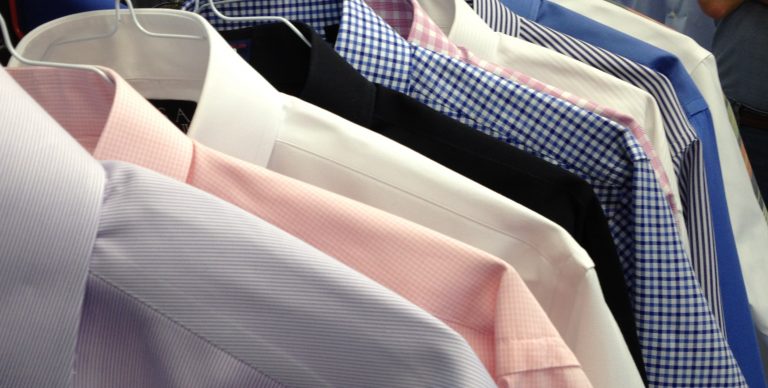Starch and sizings are laundry additives that can increase the firmness of fabrics, particularly dress shirts, and many of our customer like the look “heavy starch” will give the shirt. Will the use of heavy starch damage the garment over time? A Drycleaning and Laundry Institute study showed starch and sizings can both protect and harm shirts at the same time.
Shirts undergo two types of abrasions. One type is called flat abrasion, and it refers to the abrasion that occurs when the shirt rubs against any other surface while you’re wearing it; Like a jacket or sweater. The other type, flex abrasion, refers to the stretching of the fibers when the wearer bends an elbow, or otherwise stretches the material.
Starch adds protection to shirts, enabling them to withstand higher degrees of flat abrasion (normal wear when it brushes up against something). However, since starch stiffens the fibers and makes them less flexible, it reduces the degree of flex abrasion a shirt can withstand (stretching around the elbow for example).
Tensile strength is the measure of how well fabrics and fibers resist breaking under tension. Evaluation by DLI’s Textile Testing laboratory found that shirts with medium starch and no starch had similar tensile strength. Variances in tensile strength were evident between shirts with no starch and shirts with heavy starch.
After 10 laundering cycles, the tensile strength results on the shirts with no starch was 29% higher than the results on the shirts with heavy starch. Even after 25 and 50 cycles, there was still about a 20% difference between the two groups of shirts.
Heavy starch and sizing can decrease the tensile strength of fabrics not by degrading the material directly, but by increasing its rigidity.
The major function of starch is to add body or stiffness to a fabric which in turn will produce little flexibility. This lack of flexibility causes the fabric to snap when tested rather than stretch, which decreases the fabric’s tensile strength. Starched and sized shirts were laundered to remove the starch and tensile strength was retested. The results indicated a significant increase (30%) in tensile strength after starch removal.
The life expectancy of a shirt is shortened by the use of starches and sizings by reducing its ability to bend, stretch, and straighten during use, according to the DLI study. Balancing out those negatives are the bonuses of having better whiteness retention, a crisper look, and increased resistance to staining.



